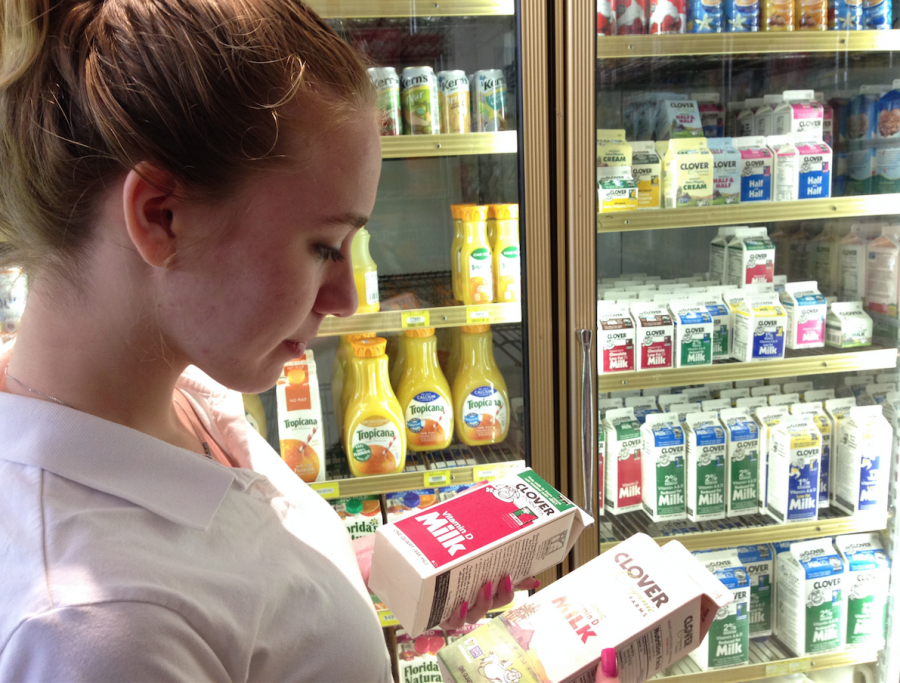Organic food has debatable value
May 1, 2015
Neely Metz
Senior Reporter
While the price of a pound of apples may cost $1.50, organically grown apples may cost twice as much, causing consumers to decide whether doubtful health benefits compared to non-organic food is enough to pay the higher price.
“My family buys organic food whenever we can,” sophomore Maya Shur said. “It’s just a matter of not putting chemicals and pesticides into your body. If you’re eating only organic foods you don’t really have to worry about that.”
Organic farming not only avoids the use of synthetic pesticides and fertilizers in produce, but also growth hormones and antibiotics in animal-sourced food. Food must meet the conditions of the United States Department of Agriculture to be officially certified as an organic food, according to the USDA National Organic Program.
The organic food market has increased 11 percent in income the United States, reaching over $39 billion in profit. A growing demand for organic food has boosted the number of organic farms to 19,474 as of 2014, with the majority dedicated to produce, according to the Organic Farming Research Foundation.
“All things being equal, you’ve got to believe that the organic practice is potentially less harmful, not to say that the non-organic practice is harmful,” Science department chair Ray Cinti said. “When you’re not using pesticides, it’s obviously going to be more expensive. In some ways stores can make money off of this fear, when in fact there’s probably very little difference.”
Despite a higher price, organic food has not been proven to contain greater nutritional content over conventionally grown food, according to nutritionist Kristen Rasmussen.
In an effort to determine the nutritional difference of the two food types, researchers compared nutrients in organic foods to nutrients in non-organic foods. The results showed only slight differences in the food’s nutrition, but the organic food displayed superior safety with 30 percent less pesticide residue than conventionally grown food, according to the study conducted at Stanford University.
“There is a lot of disagreement surrounding whether or not organic food is more nutritious,” Rasmussen said. “Some research shows certain organic fruits and vegetables area higher in a specific nutrient, but it’s not clear across the board.”
Chemical technology for conventional farming is designed to decrease the amount of labor required for harvesting produce, allowing farm owners to pay their workers less while reducing the sale price, according to CropLife America.
Organic farming methods require increased labor for reducing weeds and harvesting manually, raising the overall price of the food, according to the Food and Agriculture Organization of the United Nations. Due to the high price of organic food and farming, feeding the growing population solely on organic food will be impossible, as many people are not able to afford the higher prices, according to Cinti.
“The truth is, we couldn’t farm completely organically to meet the population,” Cinti said. “If only the wealthy individuals in our population can afford ‘healthy’ food, that doesn’t seem quite acceptable. If that’s the case, the course of action dictates to make the non-organic food healthier.”
The use of pesticides in conventional farming can improve productivity and yield, providing more food for more people in a shorter amount of time than organic farming, according to the National Center for Biotechnology Information.
Farming through organic practices aims at benefiting the environment through natural techniques, rather than using chemicals that may cause serious and long lasting damage to soil, water sources and wildlife, according to the Food and Agriculture Organization of the United Nations.
“Most scientists agree that organic agriculture production methods are better for the environment than conventional agriculture,” Rasmussen said. “It supports healthier soil, replenishes nutrients, and doesn’t require as much energy.”
While the use of pesticides can assist in farming efficiency, some health risks and complications can come into effect.
Depending on the specific type of pesticide used in non-organic farming, size of dose and age of recipient, direct contact with synthetic pesticides can lead to serious injuries, especially with young children, according to the Natural Resources Defense Council.
Agricultural workers on conventional farms who handle large doses of pesticides on a routine basis are at greater risk for more serious injuries, with an approximate 20,000 farmers poisoned due to contact with pesticides on the job, according to the U.S. Environmental Protection Agency.
“Farm workers are constantly exposed to very high levels of pesticides so there are high risks of developmental defects, cancer, and pregnancy complications,” Rasmussen said. “In large amounts it’s really harmful, but what we don’t know is how harmful the small amounts are that we find on produce.”
When it comes to animal-sourced food, purchasing organic options that have not used antibiotics or growth hormones on the animal is the best choice for one’s health, according to Cinti.
Long-term ingestion of antibiotics through food such as dairy products and meat can cause a bacterial resistance within both humans and the animals, and can be harmful in cases of bacterial infection and food consumption, according to the Center of Disease Control and Prevention.
“Milk can carry hormones, but what it can also carry are the antibiotics which are more harmful,” Cinti said. “You don’t want to expose people to antibiotics because they are killing off bacteria in your body, which is mostly healthy, and a resistance could be formed as a result of the antibiotics.”










